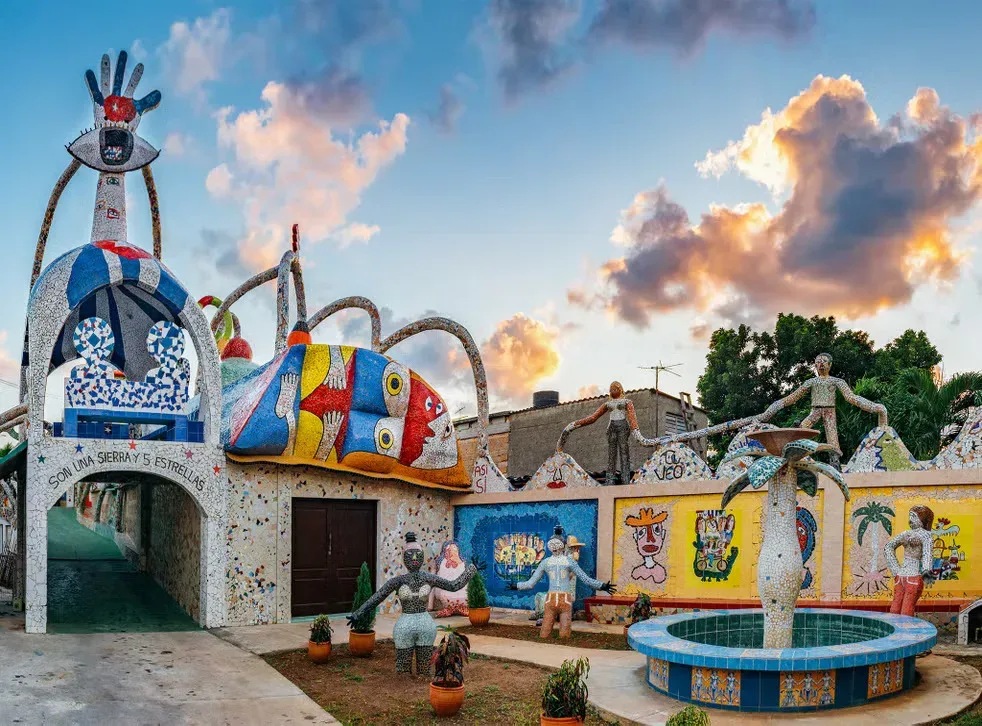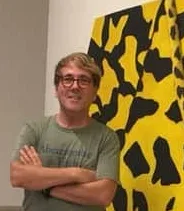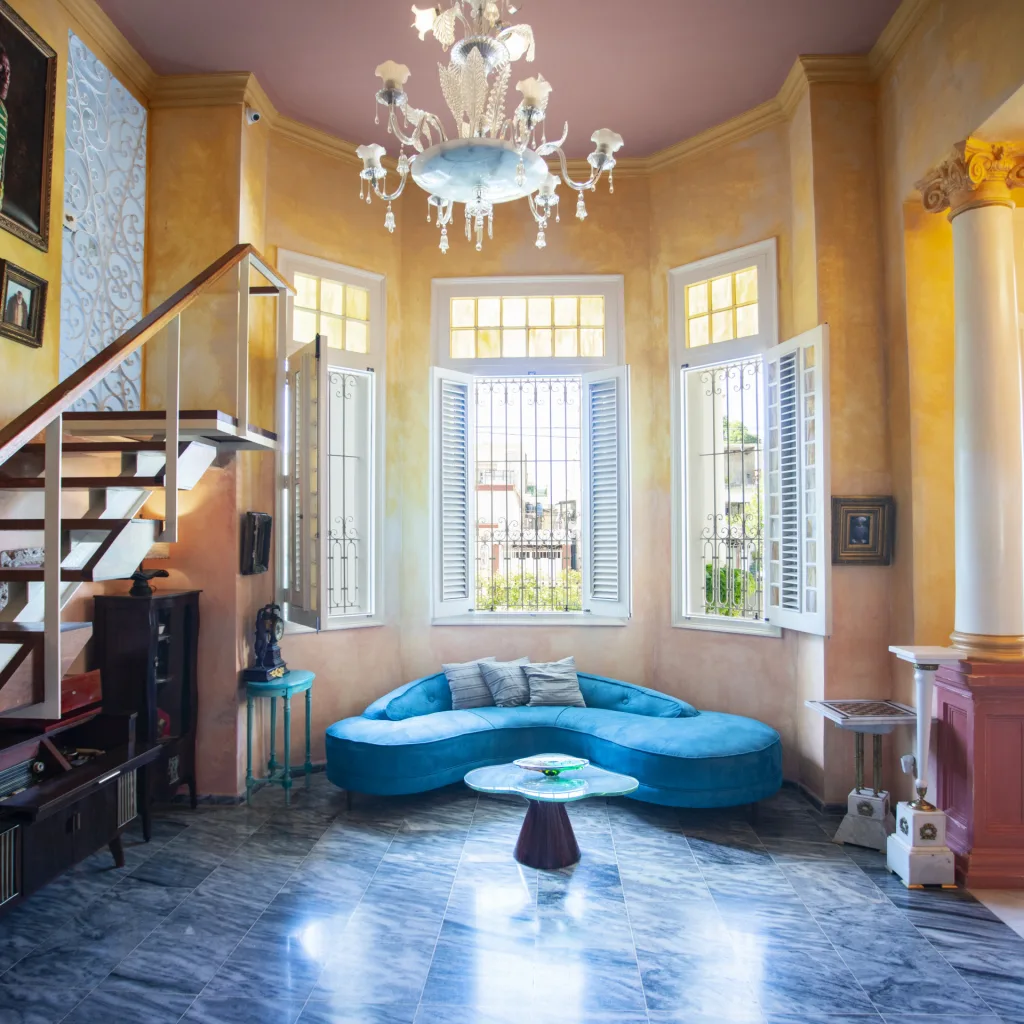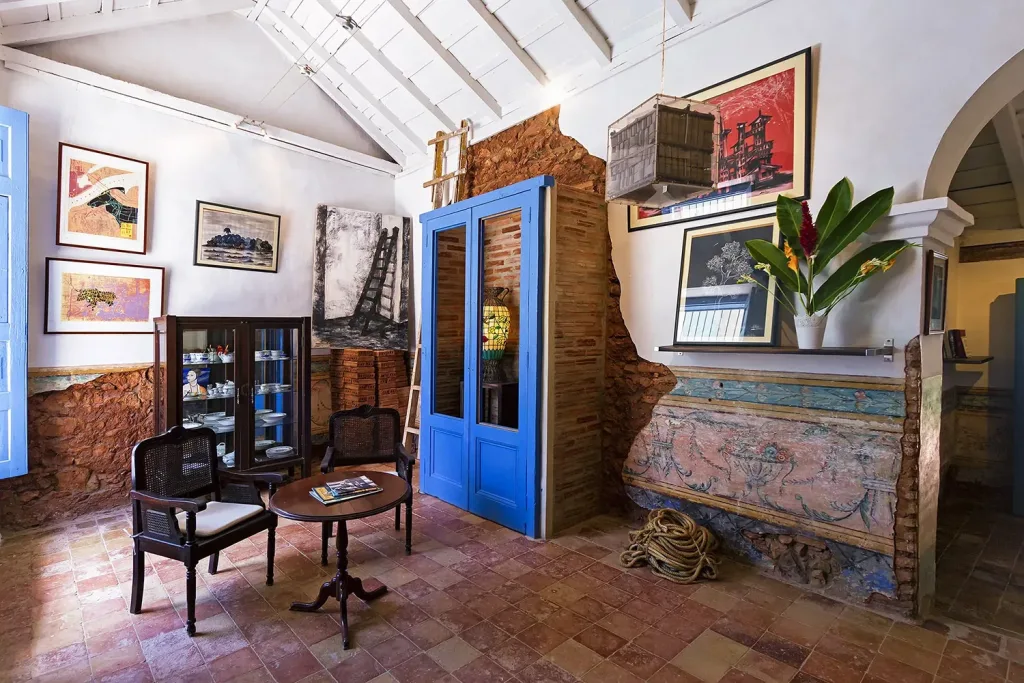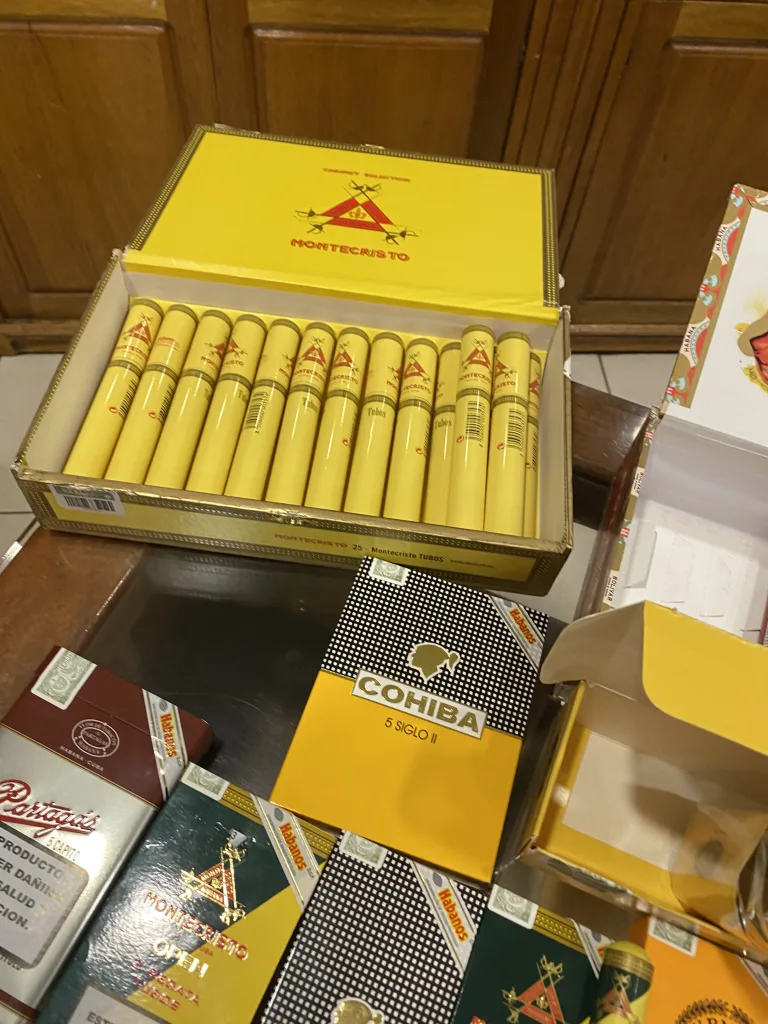Each city or town has its artist. If you pass by Jaimanitas, this coastal spot in the western part of Havana, don’t miss the intersection of 226th and 3rd A, Miramar. There you will breathe in the habitat of an original artist, you will touch the creative world of José R. Fuster. You will see a ceramic house, but there is much more: a ceramic neighborhood. It is a marvelous spot which escapes from his borders/walls to fill a neighborhood with these creations.
Like an open-air gallery, the creator (born in Caibarién, 1946) has removed the skin (cement, wood and metal) to permit that the eye meets at once his clay creations. A great facade (the door of Fuster, which measures 12 meters of width and 7 of height) will welcome you. It is like a great catalogue of all his ceramic creations, with anthological works from 1968 to the year 1997, when he built it. But the house has developed into an original Cuban Art and Culture Palace, where the visitors are amazed with all the visual richness, full of details of…Cuban expressions. Now, words ride over the adventures the ceramist, draftsman and painter propose to our look and sensibility.
One day, Fuster knew the ceramic art and his hands penetrated through the labyrinths of clay. The art rooted in the popular culture emerged. The idea of this house came in 1976, tells the creator, when he was the curator of a Cuban ceramics exhibition in the ancient socialists countries of Europe. In Rumania, specifically, he visited a small town (Pestisani) where the sculptor Constantin Brancusin (1876-1957), who was a member of the school of Paris, lived. “I discovered his particular world: the door of the kiss, the infinite column, the table of the silence…, and I said to myself: if one day I have the means and the conditions I will do the same within my style.”
Time went by and the artist continued to construct his work, where, at the beginning, were present the characters of the countryside, the corral animals, a peasant atmosphere. The year 1961 and the Sierra Maestra marked the time and the place where he began his artistic career, when he was a literacy tutor. Those events left an indelible mark in all he would do later. They inspired his rural and human landscapes, the magic mountains’ background and the peasants who appear in his pieces and disappear. Later on, his hands – that never abandoned the clay – reached cards and canvases, so the Fuster painter and draftsman emerged. Even in those admired bronze sculptures with his signature, in which he continues to tell stories.
In 1996 he began to make his dreams come true: to construct in his own way the house that grows Cuban art. After crossing past the ceramic threshold-catalogue, we walk into the garden, with the tower of the rooster (4 meters of height, covered in ceramics) that functions as a kitchen and is a parody against machismo. There is also the Cuban table, inspired by the table of the silence, so it is an homage to Brancusi, but it is also an homage to the 14 Cuban provinces, with allegorical characters like La Guantanamera, La Bayamesa, Compay Segundo… The studio-workshops is held by four columns covered in ceramics, where stories about love and joy are told, and memories from popular musicians are embedded, as well as an homage to Botticelli.
Numerous surprises are to be found on the way: the table of the sun, the table and the window of the love (two hearts in a brilliant red), the pool…A gallery space where the last of the artist’s “harvest” is shown. His world, as if it were extracted from the childhood stories, appears and takes shape in front of the retinas. There are cows, palm trees, peasants, buses overflowed with people, sirens, bicycles, colorful ballerinas en pointe, houses with audacious forms, in which the doors and windows face to the countryside or to the city. His diligence integrates with efficacy a fable universe that catches us. Picasso’s profiles and the undulations like puppets “deceive” the reality. As if everything was assembled in only one art, profiles from artists like Chagall, Dalí, Picasso, Brancusi, are discovered; always with this Cuban hand that is FUSTER: Magic of art.
The creations in clay are reflected in the paintings and drawings hanging on the walls because on several occasions the baroque imprisoned in Fuster has wanted to make ceramics rhyme with the vivacious color of the mosaic. Upstairs is the ceramics workshop and then the studio. It is a magic space where now they are creating also beautiful stained-glass windows, full of the light of the Cuban atmosphere that amaze with those glass transparencies where the Cuban landscape and life brathe. An immense flower (5 meters of height and 10 of width) of ferro-cement, ceramics and crystal crowns the installation. In the roofs, there is a sort of ceramics exhibition where emerge the most dissimilar characters, and from there the sea can be observed.
But Fuster, as a Cuban artist, was not enclosed inside the ivory tower. He looked at his close surroundings and with the help of many and above all, his own help, he continued the work to the street. Many facades, the house of the family’s doctor, and tens of houses, bus stops, mural paintings in any clear space talk about the Latin American countries; the Granma yacht with its Commanders and Cuban flags; a tribute to Gaudi because he enters, also, into the architecture with the help of some architect friends. There are parks and entertainment elements for the children (tunnels, toboggans), benches; all covered in ceramics, a work in which other artists have also participated to offer it to the people who welcome them.
Note:
The French public which visits this place will find a resemblance to Ferdinand Cheval (Facteur Cheval): French architect, sculptor, artist and mailman, who lived between 1836 and 1924. During 33 years, starting in 1879, he built an original palace at his home town Chateauneuf-de-Galaure. He used stones of different sizes, forms, textures…, and combined different styles, from the biblical inspiration and from the Hindu mythology. In 1969, when the novelist and man of politics André Malraux was Minister of Culture, the palace was declared Cultural Patrimony.

